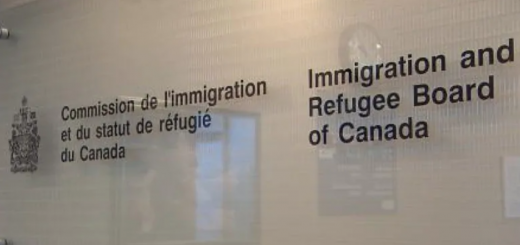Ontario’s Sex Offender Registry Discriminates Against People with Disabilities, rules Ontario v G

Content warning: sexual violence, murder, bipolar disorder, policing
Despite the ongoing pandemic, this fall has been a notable season for advancing the Section 15 substantive equality rights provision of the Charter of Rights and Freedoms [Charter] at the Supreme Court of Canada (“SCC”). In October, the SCC found the Royal Mounted Canadian Police pension plan discriminated against women workers in Fraser v Canada (Attorney General), 2020 SCC 28. Then in November, the SCC ruled Ontario’s sex offender registry is discriminatory to those found “not criminally responsible on account of mental disorder” (“NCR”) and absolutely discharged of a sexual offence in Ontario (Attorney General) v G, 2020 SCC 38 [Ontario v G]. While those criminally convicted and absolutely discharged of their sentence were exempt from reporting to the police, those found NCR were required to report to the police annually and remain on the registry.
The NCR designation underscores that people with mental health disabilities may not necessarily possess the legal intent nor capacity to be convicted and punished for a crime. In this way, NCR is an alternative to the criminal justice system based on a model of treatment instead of punishment (Winko v British Columbia (Forensic Psychiatric Institute), [1999] 2 SCR 625 [Winko]). Accordingly, Ontario v G is a challenge to the criminalization of and systemic ableism against people with a mental disability.
However, while the SCC justices unanimously agreed that registry violated the plaintiff’s right to equality under Section 15 of the Charter, they disagreed on how to remedy the violation— specifically, whether to declare the law invalid immediately, and if not, and whether it still applied to the plaintiff, G. As we will see, the majority conveniently uses statistical evidence of dangerousness and historical marginalization to falsely construct disabled people as inherently dangerous, depending whether they are analyzing the violation or the remedy.
Legislative and Factual Background
Ontario’s sex offender registry, regulated by Christopher’s Law (Sex Offender Registry), 2000, SO 2000 c 1 [Christopher’s Law], was the result of the 1988 murder of 11-year-old Christopher Stephenson by a released convicted sex-offender. According to Christopher’s Law, people convicted or found NCR of a sex offence are required to report in-person at the police station annually, for a minimum of ten years to potentially the rest of their lives, while their record remains on the registry after death. The registry is not available to the public but shared between police organizations in and outside of Canada; it is intended to aid the police in “investigation and prevention” of sexual offences (Ontario v G, para 73). Registrants who do not comply with Christopher’s Law can be fined with a maximum of $25,000 and two years of imprisonment.
The plaintiff in the case, G, was charged by the police after his wife requested a restraining order against him due to two instances of sexual assault. At the time of the assaults, G was experiencing a manic episode due to his undiagnosed bipolar disorder. The episode also led to an uncharacteristic resignation from his job, unreasonable spending of money, sleeping issues, fatigue, excess alcohol use, anxiety, paranoia, stress, and unexplained feelings of euphoria. A year after the assaults, he was found NCR by the Ontario Review Board (“ORB”). The following year, the ORB determined he was no longer a risk to the public since he had not committed any criminal offences before or after his episode and symptoms of his bipolar disorder were in full remission. Accordingly, they ordered G an absolute discharge.
However, unlike his counterparts who were found guilty and fully pardoned, G remained on the sex offender registry where he was required to report to the police every year since he was found NCR in 2002. Consequently, G challenged Christopher’s Law on the basis that it violated his Section 15 right to equality on the basis of mental disability and Section 7 right to life, liberty and security of person.
Equality Rights Violated, Liberty Rights Remain Unresolved
The concurring and dissenting judicial opinions agreed with the majority opinion, penned by Justice Karakatsanis, that G’s situation passed the two-pronged test to establish that his Section 15(1) Charter right to equality was violated. First, they found that Christopher’s Law created a distinction on the basis of mental disability in the NCR regime, which, in a “complex web of statutes and regulations” does not allow those found NCR any “exit ramps” from being exempt from the sex offender registry (Ontario v G, paras 51 and 55). Second, Justice Karakatsanis explained how the differential treatment perpetuated a historical disadvantage that presumes disability is an “abnormality” and that people found NCR cannot be “rehabilitated” due to ‘inherent dangerousness’ (Ontario v G, paras 61, 59, and 62). She expressly rejected the Attorney General’s argument that those found NCR are denied an exit because of their statistical risk to reoffence and not a stereotype. The SCC instead grounded the historical roots of today’s discrimination to nineteenth century England when people with mental health issues were regularly deemed deviant, excluded from mainstream society, and incarcerated. They go further to cite the Empowerment Council—intervenor representing survivors of mental health services—agreeing that Christopher’s Law creates a “double stigma” to those found NCR (Ontario v G, para 66).
Lastly, the violation of Section 15(1) is not justified in a free and democratic society under Section 1 of the Charter. The SCC found the violation was more than minimally impairing, voicing that even one method of exempting those NCR from the registry would have interfered less with their equality rights and hence could be justifiable.
On the question of Section 7, Justice Karakatsanis indicated that a violation of Section 15 was sufficient to address G’s privacy and liberty interests without delving into a Section 7 analysis. Further, she acknowledged that a full analysis of the sex offender registry as violating one’s life, liberty and security of person that is not in accordance with the principles of justice would have broader implications on the registry’s entire scheme. She referred to another case currently before the courts deliberating just that, but in regard to the federal sex offender registry, implying that the Section 7 matter would be decided there (R v Ndhlovu, 2020 ABCA 307).
Suspending the Declaration of Invalidity: Court-Sanctioned Discrimination
The judicial opinions diverged on how to remedy the Section 15 violation within the majority, concurring, and dissenting (in part) decisions.
The majority ruled that Christopher’s Law should be declared invalid as directed by Section 52(1) of the Constitution Act, 1982—but only after one year of the ruling and that G should be exempt from this suspension. They reference Schachter v Canada, [1992] 2 SCR 679 [Schachter] as providing the twin principles of constitutional remedies to respect the Charter’s purpose and the legislative purpose. This means balancing the needs of the litigant’s Section 15 right and rule of law, and the needs of the public and legislature through Christopher’s Law at-large. Ultimately, Justice Karakatsanis advocates for a ‘principled discretionary approach’ based on the balancing act, as advised by the intervenor, the David Asper Centre. The primary reason to justify the suspension was the majority’s reliance on statistical evidence: that those found NCR and absolutely discharged were more likely to reoffend. As a result, the SCC determined they were sufficiently a danger to the public to justify why Christopher’s Law could not be immediately struck down.
The majority employed this justification despite the fact that those absolutely discharged after being found NCR are deemed by the ORB to no longer pose significant risk to the public. In this way, the majority is actually using the same stereotypes and statistical information it earlier rejected in its Section 15 analysis to now suspend the remedy that people like G deserve. Therefore, the suspension continues to stigmatize people with mental health disabilities as dangerous.
The practice of suspending the declaration of invalidity is one that the majority recognized should be used rarely, yet they use it anyway, hinging on only some statistical—and decontextualized—evidence. They did not interrogate the systemic reasons why those found NCR would reoffend, thereby pinning it as an inherent fault of their disability. The SCC has been critiqued for overusing the suspension without a principled approach before (Carter v Canada (AG), 2015 SCC 5; (Canada (AG) v Bedford, 2013 SCC 72). The effect has been to give government too much leeway for enacting an unconstitutional law in the first place and deny those who continue to be harmed by the unconstitutional law—in this case, continuing discrimination against people with mental health disabilities despite ruling it unconstitutional. In exercising judicial discretion by ruling a suspension, the court is favouring the legislative interests over the interests of people whose Charter rights have been violated. The SCC’s analysis of minimal impairment under Section 1 then seems to be a hint for the legislature: if they want to create a constitutionally compliant version of Christopher’s Law for those found NCR and absolutely discharged, they must offer some exit from the registry requirements. Ultimately, the majority’s decision maintains the undertone of considering those deemed NCR as a threat to public safety, needing to be regulated.
In his concurring opinion, Justice Rowe similarly advocates against the majority’s discretionary use of the suspension. He uses Shachter principles to affirm that a suspension should be used rarely, since it contradicts judicial authority of Section 52(1) which requires the unconstitutional law to be of no force and effect immediately. He emphasizes that only a countervailing constitutional principle—such as a high risk to public safety that threatens the rule of law—can justify a suspension. Since the one year suspension has already passed since the Court of Appeal’s ruling, Justice Rowe determines the point moot in application to G.
After suspending the declaration of invalidity, the majority allowed G as the sole litigant to seek immediate relief by striking down his requirement to keep reporting to the registry and taking his name off of it. They justified this by deferring to the Court of Appeal that first suspended the declaration of invalidity and exempted G because the Court of Appeal determined that G would probably not be determined dangerous under any reformed legislation. However, Justices Côté and Brown in their dissent disagreed that G should be exempt from it. They explain that to only remedy an unconstitutional law for the litigant is unfair to everyone else who should benefit from the remedy: a suspension for everyone means a suspension for G. This blanket suspension and its unfairness to those for the term of the suspension circles back to Justice Rowe’s need to truly only use suspensions if they are constitutionally necessary.
Abolitionist Lens to Sentencing and Sexual Violence
Overall, Ontario v G is a victory against the criminal justice system’s discrimination against people with mental health disabilities—however, this victory is too narrow. As mentioned above, the suspension of invalidity is a reminder that people with mental health disabilities are still being regulated on the stereotype of inherent dangerousness. The ruling against Christopher’s Law also only applies to those found NCR and absolutely discharged; it does not take into account the appropriateness broadly of those NCR and conditionally discharged, those found NCR and institutionalized, nor the sex offender registry as a whole, as part of the criminal sentencing mechanism.
To frame this case as balancing the rights of those found NCR of a criminal offence and survivors of sexual violence would be to draw a false dichotomy. In this case, G’s wife did not want to initially report her husband’s perpetration of sexual violence and assault on her. She wanted a restraining order, to ensure he was not able to reach her or their children given his violence. Mental disability is neither a reason nor excuse for gender-based violence, but survivors of sexual violence know that the police and the criminal justice system do not contain justice for them. We also know that calls to defund the police and abolish prisons underscores criminal sentencing to be a tool of colonial and capitalist state violence against Black, Indigenous, trans, and disabled people. Under an abolitionist framework, the sex offender registry as a tool to help police is futile—this lens can help us see that the registry probably also does not meet the goals of Christopher’s Law to ‘prevent’ sexual offences and further puts into question the liberty and sovereignty rights of those criminalized. The roots of sexual violence are embedded within systemic cisheteropatriarchy and genocide against Indigenous peoples and land, which enact violence upon women and trans people the most. Accountability for men who perpetrate sexual violence has to be transformative and more effective than surveillance on a sex offender registry—and not in ways that determine their violence as inherent to them being men or having a mental disability.
A step further demonstrates that the NCR model based on ‘rehabilitation’ instead of ‘punishment’ is still embedded within the carceral logics trying to ‘fix’ people instead of addressing the roots of systemic violence. The goals of NCR are “treatment and public safety” which confronts the reality of using a securitizing narrative, statistical metrics, and rhetorical appeal to protect the most ‘vulnerable’ to ultimately marginalize disabled people just as they did in nineteenth century England (Ontario v AG, para 34). The need to ‘fix’ disabled people therefore lays bare the ingrained ableism within the medical and quasi-criminal justice system that continues to stigmatize people with mental health issues, this time through a medical system instead of an overtly criminal one. Therefore, Ontario v G is a drop in the bucket to advancing rights for people with disabilities, and further, does not advance the larger project of reconciled sovereignty for disabled people and healing for survivors of sexual violence.







Join the conversation